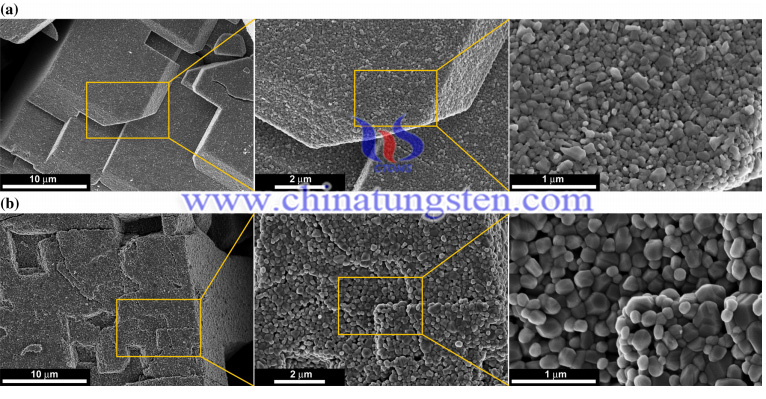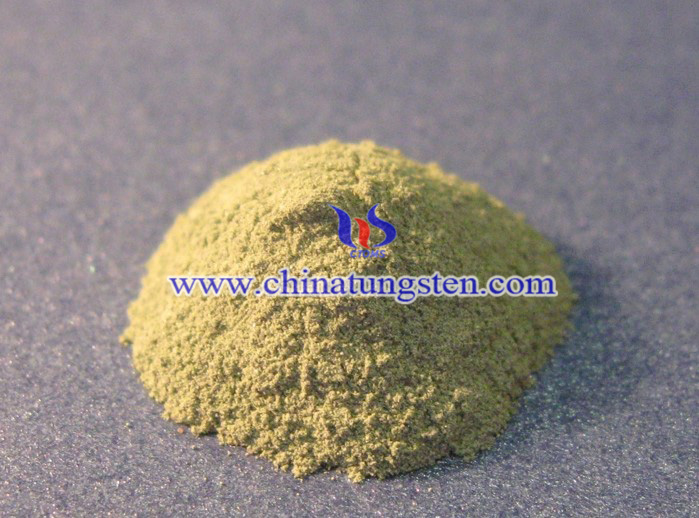Ultrasonic Preparation of Nanocrystalline Tungsten Trioxide Using Ammonium Paratungstate
- Details
- Category: Tungsten Information
- Published on Wednesday, 09 September 2020 10:47
The applications of nanocrystalline tungsten oxide (WO3) include electrochromic, photochromic, gasochromic and sonochromic devices, as a photocatalyst for water splitting and purification, for photoelectrochemical decomposition of water, in heterogeneous catalysts. With the excellent gas sensitivity, another important application is gas sensors.
Basically, WO3 shows a high sensitivity regarding ammonia, but a low sensitivity in CO detection. The synthesis approaches largely affects the gas sensor properties of WO3. nanocrystalline structures of 0D, 1D, 2D, and hierarchical nanostructures come up with different sensory properties of the WO3 obtained.

The conventional preparation process of WO3 are gas-phase synthesis (physical vapour deposition from the gas phase), soft chemistry methods (including precipitation from solutions, hydrothermal and solvothermal synthesis), electrodeposition and anodic oxidation, sonochemical synthesis. For a great number of practical applications, aqueous WO3 dispersions are most in demand, and the overwhelming majority of methods for the production of tungsten trioxide in the form of aqueous sols are based on the precipitation of tungstic acid from tungstencontaining solutions, followed by the treatment of the resulting suspensions at elevated temperatures or under hydrothermal conditions . The use of this approach inevitably leads to the production of tungsten trioxide containing a significant amount of chemically bound water, as well as impurity cations , which may adversely affect the properties of the final product. One of the most common starting materials for the preparation of tungsten trioxide containing the minimum amount of impurities (especially cationic ones) is ammonium paratungstate(APT).
An ultrasonic preparation of nanocrystalline tungsten trioxide using ammonium paratungstate has been invented. The specific synthesis process include:
Firstly, high-purity ammonium paratungstate was used as a starting material, the thermal decomposition of APT was carried out in a muffle furnace at 600, 700 and 800 C, in air. In each synthesis, 10 g of APT was placed in an alundum crucible, followed by either introduction to a preheated furnace for 10 min, then quenching in air, or heating at a rate of 10 C/min, maintaining a given temperature for 1 h and cooling with a furnace. To prepare the sols, a sample of the resulting tungsten trioxide (3 g) was mixed with 50 ml of distilled water and subjected to ultrasonication in an ultrasonic bath for 6 h. During the ultrasonic treatment, due to acoustic power scattering, the sols were heated to 40–45 C.

Finally. Thermal decomposition of APT, and the composition and structure of the product obtained and its aqueous dispersions, were tesed with thermal analysis combined with the mass spectrometry of gaseous thermolysis products, powder X-ray diffraction, scanning electron microscopy, lowtemperature nitrogen adsorption, IR spectroscopy and dynamic light scattering.
In conclusion, through thermal decomposition of APT at 600–800 C. Ultrasonication of these aggregates in water allows the formation of highly crystalline tungsten trioxide nanoparticles with a particle size of 60–150 nm. The high sedimentation stability of WO3, could be caused by the formation of tungstic acid on the surface of WO3 particles when they come into contact with water. The nanocrystalline WO3 obtained can be used to produce gas sensors for ammonia.
- APT Manufacturer & Supplier, Chinatungsten Online: ammonium-paratungstate.com
- Tungsten News & Prices of China Tungsten Industry Association: www.ctia.com.cn
- Molybdenum News & Price: news.molybdenum.com.cn
- Tel.: 86 592 5129696; Fax: 86 592 5129797; Email: sales@chinatungsten.com



 sales@chinatungsten.com
sales@chinatungsten.com